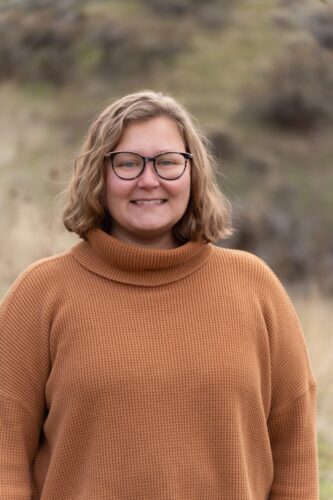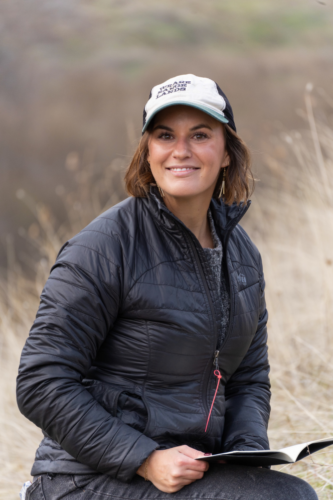Haley Netherton-Morrison and Molly Levy, doctoral candidates in the Human-Environment Systems program, are trailblazing research in the West’s rural communities with two newly awarded U.S. Department of Agriculture National Institute of Food and Agriculture predoctoral fellowships.
The two-year fellowships of nearly $120,000 each will support Levy and Netherton-Morrison as they analyze the complex relationships between western lands and the communities living in, working on and managing them.
Haley Netherton-Morrison
Understanding rural values

“I’m looking at how landscapes and communities are changing and how the ways that people relate to those places and those landscapes affect what they want to see happen in those spaces,” said Netherton-Morrison, who came to Boise State from Fishers, Indiana.
Her research focuses on three Idaho counties, Owyhee, Blaine and Teton.
As forces such as population growth, development, and land use alter the West, Netherton-Morrison’s research will uncover where community members’ perspectives differ and align. This knowledge could inform future community planning and land management.
For example, some community members embrace the cultural amenities that come from growth, such as restaurants and entertainment. Others mourn the loss of a strong sense of community or of long-time local businesses. Each community member has a different perspective, yet each shapes policy through voting and community involvement.
“There’s a social science focus to my research,” Netherton-Morrison said. “It’s about finding people where they are: post offices, public parks, trails or coffee shops. I find that people are interested in sharing their perspectives. I’ve had a lot of good conversations about what makes these rural communities special.”
Molly Levy
Listening to stakeholders

Levy’s research concerns the Thunder Basin National Grassland of Northeastern Wyoming. This area supports a wide range of uses, including livestock grazing, environmental and wildlife conservation and natural resource extraction. As such, it is of great importance to many stakeholders, including the U.S. Forest Service, federal and state government agencies, conservation non-governmental organizations, private landowners and ranchers. The area is a unique jigsaw puzzle of land ownership types and interests.
To conduct her research, Levy, originally from Upstate New York, is interviewing stakeholders and analyzing the outcomes of federal decisions made since the passage of the Environmental Policy Act in 1970. Since the 1980s, there has been a gradual shift from “top-down” decision making by federal agencies to a more collaborative process.
One question Levy wants to answer is: “What stakeholder perspectives are being addressed in these decisions and is collaboration changing the way these agencies are making decisions over time?”
By Brianne Phillips